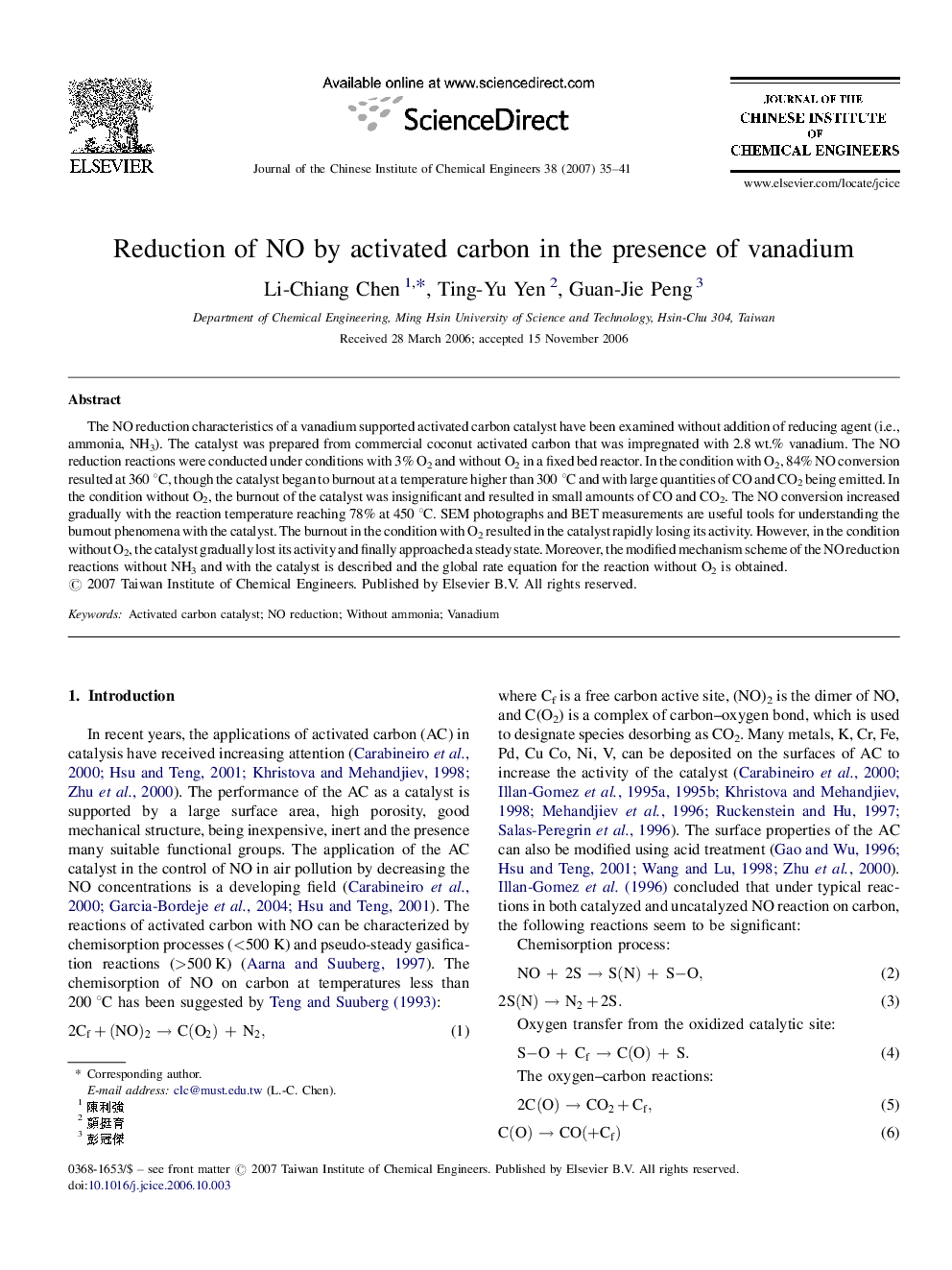| Article ID | Journal | Published Year | Pages | File Type |
|---|---|---|---|---|
| 217596 | Journal of the Chinese Institute of Chemical Engineers | 2007 | 7 Pages |
The NO reduction characteristics of a vanadium supported activated carbon catalyst have been examined without addition of reducing agent (i.e., ammonia, NH3). The catalyst was prepared from commercial coconut activated carbon that was impregnated with 2.8 wt.% vanadium. The NO reduction reactions were conducted under conditions with 3% O2 and without O2 in a fixed bed reactor. In the condition with O2, 84% NO conversion resulted at 360 °C, though the catalyst began to burnout at a temperature higher than 300 °C and with large quantities of CO and CO2 being emitted. In the condition without O2, the burnout of the catalyst was insignificant and resulted in small amounts of CO and CO2. The NO conversion increased gradually with the reaction temperature reaching 78% at 450 °C. SEM photographs and BET measurements are useful tools for understanding the burnout phenomena with the catalyst. The burnout in the condition with O2 resulted in the catalyst rapidly losing its activity. However, in the condition without O2, the catalyst gradually lost its activity and finally approached a steady state. Moreover, the modified mechanism scheme of the NO reduction reactions without NH3 and with the catalyst is described and the global rate equation for the reaction without O2 is obtained.
